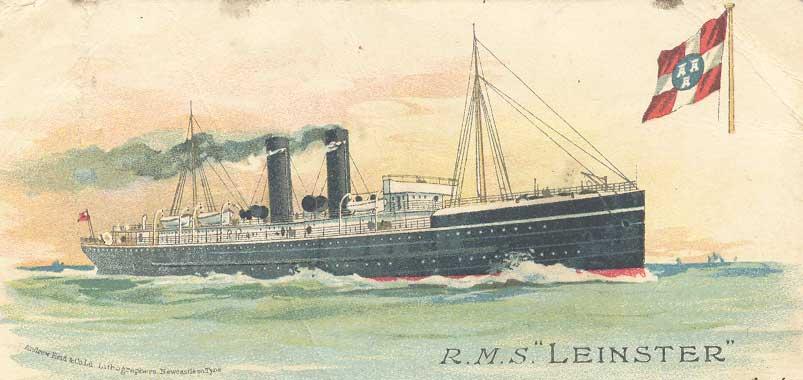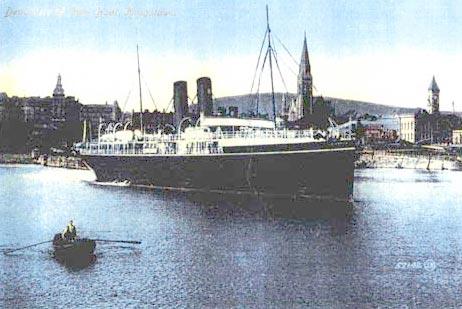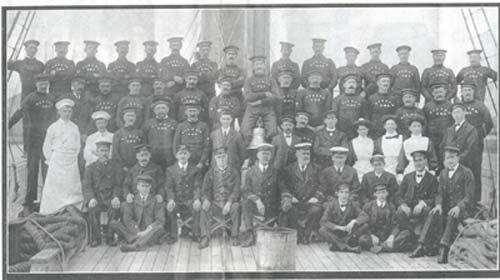R.M.S. Leinster
The biggest sea tragedy in Irish history was commemorated in January 1996 when the then Minister of State at the Department of the Marine, Eamon Gilmore TD, unveiled a special memorial in Dún Laoghaire Harbour. The memorial was to the 501 people who lost their lives in 1918, when the RMS Leinster was torpedoed just outside Dún Laoghaire Harbour.
On October 10, 1918 the Mailboat, “The RMS Leinster” sailed out of Dún Laoghaire with 685 people on board. 22 were post office workers sorting the mail, 70 were crew and the vast majority of the passengers were soldiers returning to the battlefields of World War I.
Twelve miles out from Dún Laoghaire Harbour, “The Leinster” was torpedoed and sunk by the German U-boat U-132. 501 people lost their lives and the 184 survivors were rescued by the British destroyer RMS Mallard and RMS Lively and taken ashore in Dún Laoghaire. This was the greatest loss ever of Irish life at sea. More Irish people lost their lives on the “Leinster” than on the Titanic or the Lusitania.
In the years leading up to 1996, local divers, Noel Brien, Brian Whelan, Billy Owens and Fred Hick began exploring the sunken wreck of “The Leinster”. They recovered the anchor of the vessel and Minister Gilmore unveiled it as a memorial to those who lost their lives.
An Article by Jack Higgins
See attachment of a series of pictures of all the postal workers who died and my grandfather. I believe it was made around 1945 when my grandfather retired from the Post Office. I have a photographic copy of the original which was made in February 1956. I believe it is unique as it was the only one made as a parting gift by the Post Office workers.
Also attached, (see below), is a copy of a reprint in the 1955 “Postal Worker” of my grandfather’s original first hand account of the sinking and his rescue. My grand father was named John Joseph Higgins and it was a tradition in our family that a John Joseph had a son John Anthony and that was my father’s name. I of course became a John Joseph but in the typical fashion of the times we were all known as “Jack” to our family and friends.
The description is very matter of fact and belies the obvious drama he endured. He recalls grabbing some cables and using them to haul himself out of the sorting cabin. I recall him telling me that the generators were still running so the wires were live and he was in water with the result that he was severely shocked. This contributed to an early onset of blindness shortly after he retired. I used to read the ‘Evening Herald’ to him each night so he could keep up with the news. I remember him telling me that the military lorry took him to Westland Row Station where his ‘bike was stored and he then cycled home to Glasnevin. My grandmother had heard the news on the radio and in a panic had all the children praying and she thought she saw a ghost when he walked in the door. His first words were “woman will you get off your knees and get me some tea I’m starving and frozen cold”
The related information above was supplied by the grandfather of Jack Higgins, Mr. John Joseph Higgins, the single survivor from the Post Office crew.
National Maritime Museum Exhibition
The Dún Laoghaire National Maritime Museum, located on Haigh Terrace, Dún Laoghaire has a permanent exhibition dedicated to R.M.S Leinster. Their interactive displays allow you to trace the names and background of most of the victims while their exhibition boards details its background and charts its final voyage.
The RMS Leinster website is another wonderful source of information on this maritime tragedy.






